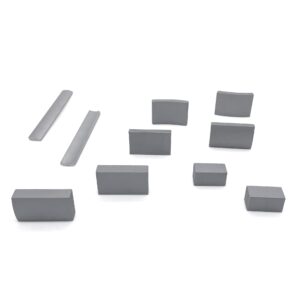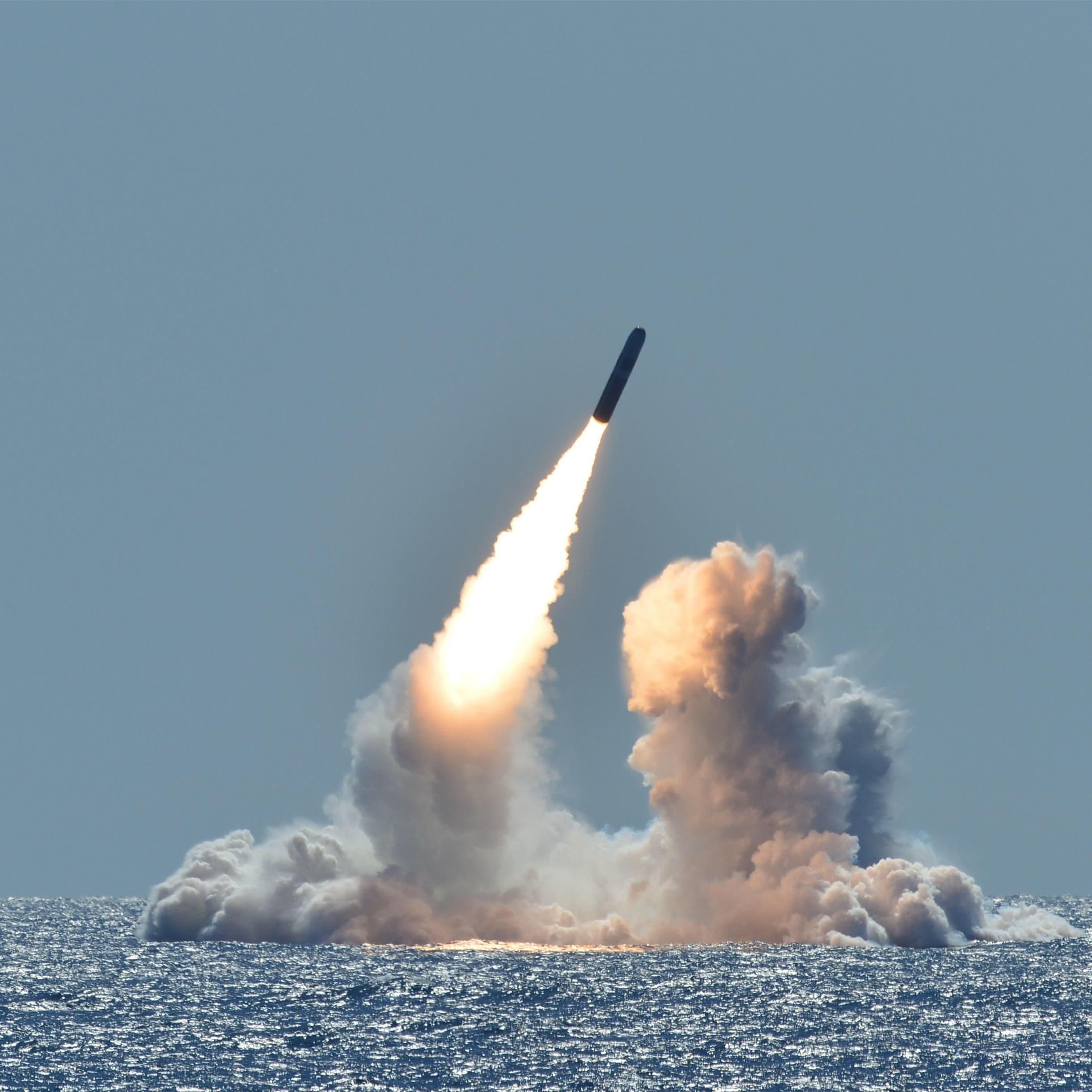Samarium Cobalt Magnets
Samarium cobalt (SmCo) magnets are strong permanent magnets made of samarium, cobalt, and other minor elements. It is known for its high magnetic strength and good temperature stability. Samarium cobalt magnets are generally weaker than neodymium magnets at room temperature, but they perform reliably in extreme temperatures when neodymium magnets stop working. Since SmCo is highly resistant to corrosion and oxidation, coatings are generally not required. Since the samarium cobalt magnet is made by sintering, it is very brittle and cracks may appear inside.
Sm1Co5
SmCo5 alloy contains one samarium atom for every five cobalt atoms, and is the first generation of samarium cobalt magnets. The (BH)max of 1:5 SmCo alloys is from 15 MGOe to 25 MGOe and the service temperature is up to 250°C. SmCo5 mainly contains Sm and Co and does not contain iron, so it has better resistance to corrosion and demagnetization.
Sm2Co17
Compared with Sm1Co5, the magnetic properties of 2:17 SmCo alloy are better. Its (BH)max usually varies between 24 MGOe and 32 MGOe, and its working temperature can reach 300 °C. Sm2Co17 contains very few other elements such as iron, copper, and samarium and cobalt. The withdrawal of iron from this alloy means that it may corrode slightly in high humidity environments, so Sm2Co17 magnets are coated with nickel in some cases.
Smco magnet pdf
MANUFACTURING PROCESS
Raw Material Preparation
The production of SmCo magnets starts with the preparation of raw materials. The main raw materials are iron, zirconium, copper, cobalt and rare earth elements Sm1-xRx. Sm1-xRx refers to samarium and a certain proportion of one or several heavy rare earth elements.
Casting
The smelting process can adopt the ingot casting process or the quick-setting casting process. The ingot casting process is to cool and solidify the smelted magnet raw materials and make them into alloy ingots. The quick-setting casting process is to rapidly cool and solidify the smelted magnet raw materials, and throw them into alloy sheets. The samarium-cobalt alloy preferably adopts the ingot casting process; the neodymium-iron-boron alloy preferably adopts the quick-setting casting process. The melting temperature is generally 1200-1600°C, which should be adjusted according to the actual situation.
Hydrogen crushing
After the samarium-cobalt ingot is obtained, the traditional preparation method is to mechanically grind the SmCo alloy ingot and then perform jet milling. The method of mechanical crushing has high energy consumption, low production efficiency, and large loss of equipment. In addition, the powder obtained by mechanical crushing is poor in brittleness, which leads to a long time for subsequent jet milling and low milling efficiency. The hydrogen crushing process is an efficient and energy-saving powder making method, which uses the hydrogen absorption expansion and crushing characteristics of alloys to prepare alloy powders. Hydrogen breaking process has been widely used in the production of NdFeB permanent magnet materials. In the high-pressure hydrogen environment, the samarium-cobalt alloy will be broken, and coarse powder will be obtained after dehydrogenation.
Jet Mill Grinding
The samarium-cobalt alloy obtained after hydrogen crushing is coarse powder, and jet milling is required to obtain fine samarium-cobalt magnetic powder. The jet mill is to drive the high-speed airflow to move the material at a high speed, so that the material collides, the friction surface is crushed, and finally fine magnetic powder is obtained.
Pressing
Magnetic powders need to be oriented and pressed in magnetic field, and then isostatically pressed until the samarium cobalt is formed into a blank.The arrangement of samarium cobalt magnetic powder without magnetic field treatment is chaotic, and the magnetic powder can be arranged in a certain direction by pressing and forming in a magnetic field, from isotropic to anisotropic. The samarium cobalt magnet blank that has been pressed for the first time also needs to be subjected to isostatic pressing. Isostatic pressing takes advantage of the fact that the liquid has the same pressure in all directions, and places the samarium-cobalt blank in a closed high-pressure container containing liquid for further pressing.
Sintering
First, the samarium cobalt magnet blank need to be put into the vacuum sintering furnace for vacuum pre-sintering with the temperature 1160℃ to 1190℃ for 30min. Then, high purity argon was injected into the vacuum sintering furnace until the pressure in the vacuum sintering furnace reached 0.02Mpa. With the cover of argon, the vacuum sintering furnace was heated up to 1210C for 90min, and then the vacuum sintering furnace was cooled down to 1170C solution treatment for 4hours, finally the vacuum sintering furnace quickly quenched to room temperature.



